Penguins
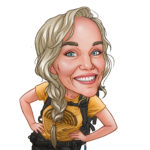
By Jaimy de Vries
The penguin was the first animal I saw on the cruise and many hundreds, probably thousands, followed. We saw them jumping and swimming in the water, walking and tobogganing on land, lots of chicks who got fed by their parents, parents chased by their hungry chicks. Besides seeing them the guided explained a lot about penguins during the trips but we also got lectures on the boat.
Penguins live in the south at cold areas, especially areas with cold seawater. The most northern penguin is at the Galapagos island. There are seventeen penguins. The biggest are the Emperor penguins with a length of 150 cm and the smallest are the little blue penguin that lives in New Zealand. The most common penguin in the Antarctic Peninsula are the brush-tailed group: the Adelie, Gentoo and Chinstrap penguin.
Anatomy
Penguins are birds, but very different than other bird species. The main thing that they have in common and what makes them a bird is that they have feathers and wings! But there feathers are different than other birds. Their feathers for example are made to get wet – they’re oiled and look like the scales of a fish what makes it easier for them to dive. Their bones are like humans: thick and heavy – not like hole bones that most bird species have. Because there bones are more dense, it’s easier for them to dive. Although they can’t fly, they have evolved into the most efficient swimmers and divers of all bords. They are also great hunters, walkers and excellent in tobogganing (sliding on their belly). Some species spend 75% of their time at sea. Their cruising speed underwater is about 10 kilometers per hour (6,2 mph) and they can dive up to 250
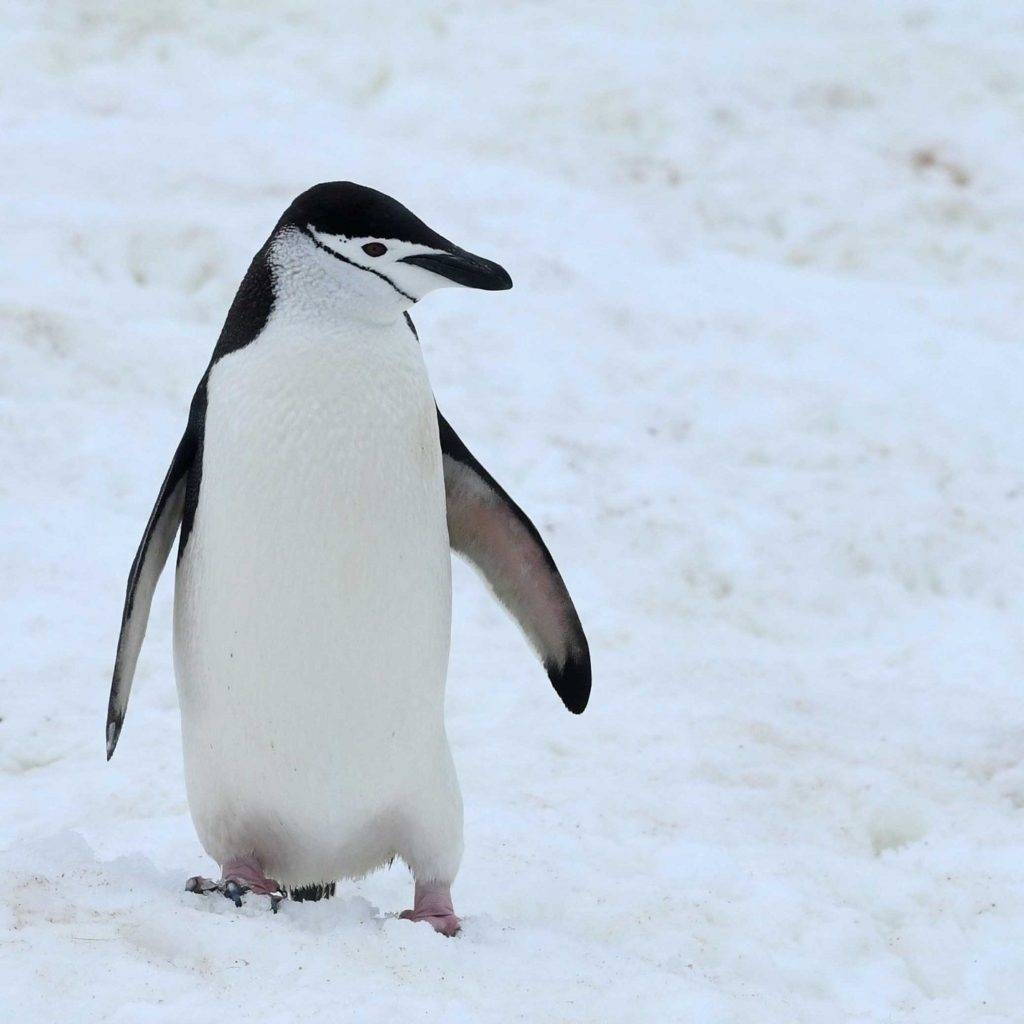
Chin strap penguin
meter (820) depth. However, penguins are rarely seen underwater, so our main impression of them is on how they appear on land. With their legs set far back for efficient movement underwater, penguins walk awkwardly in a very upright position. This is possibly the reason for their extra ordinary appeal: they look like funny little people. A way to recognize penguins are by their white belly and black back, but there is a reason why they have those two colors. It helps them hunt and protect them from predators. Due to their white belly krill and fish won’t recognize them, because the white belly looks like the reflection of the sun. Their black back is to protect them underwater for predators like orca’s and seals. Penguins can dive quite deep so if the orca or seals look down the black color of their back looks like the dark depth of the sea. Their black back also helps them to absorb heat to stay warm. Other features how penguins stay warm is by the structure of their feathers, they have dense feathers that are wind and waterproof, and they have a heat-retaining blood system what helps to stop tissues getting cold (like their feet). All very impressive right?
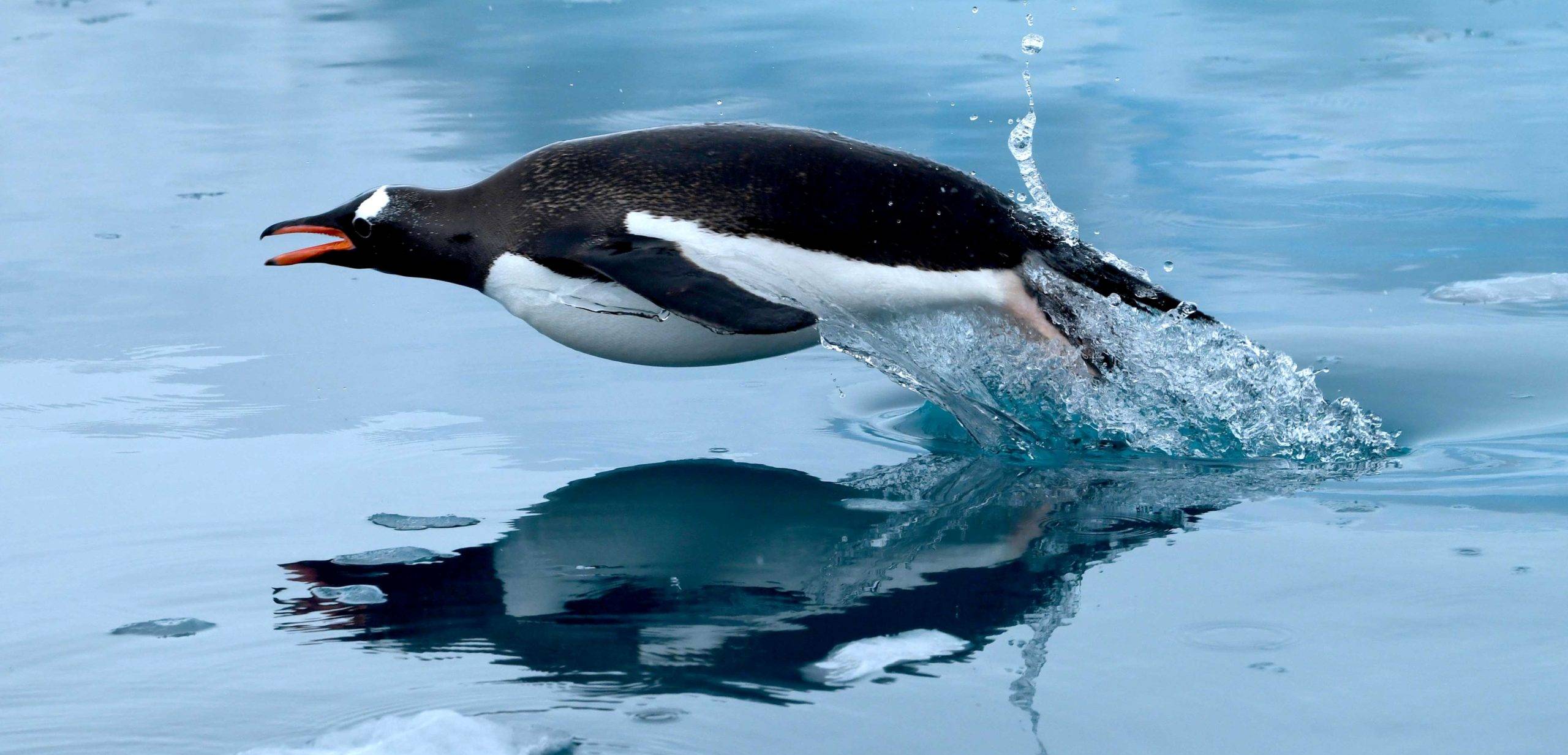
A jumping penguin. On this picture you can see what a great divers they are.
Colonies
We visited a Gentoo Penguin colony in Damoy point that is famous for its gentoo penguin colony and a British expedition hut that was transformed into a museum. In found out very quickly that Gentoo penguins are quite noisy, especially if you have a large colony of more than 100 penguins and hungry chicks. One of my top landings was Cuverville Island which is home to one of the largest colonies of Gentoo penguins. The water around the island was littered with icebergs of various sizes. We hiked to the top to have a good panoramic view. It was so a beautiful! Besides lots of Gentoo colonies, we saw many chinstrap colonies too at Foyn Harbour, hydruga rocks and half-moon island. This penguins are named like this because it looks like they’re wearing a helmet. And we got to see the third penguin of the brush-tailed penguin too! On our Zodiac cruise in Wilhelmina bay saw the Adelie penguin.
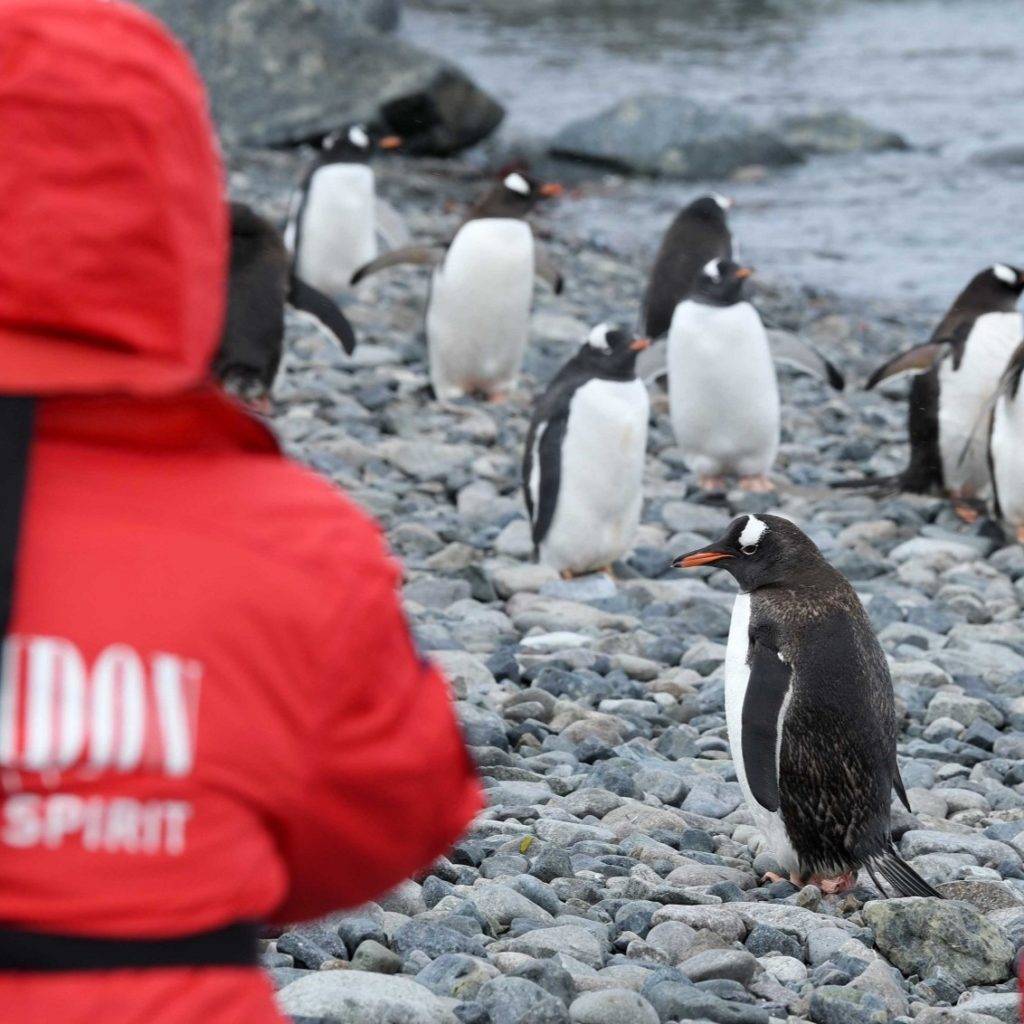
Standing besides a penguin colony
Molting Season
The time we went to Antarctica is was molting season. This is around End of February/beginning of March. Molting means that the penguins are losing their old feathers all in once. This process takes around two three to four weeks. During the moult, because plumage is not waterproof and the body is not well insulated, they cannot go to sea to feed, and may lose 3 to 4 kg in weight. They are confined to shore as they wait for their old feather coat to be replaced. This is a very stressful time for birds – energy levels are low, there is threat of starvation and dehydration, and they are unable to escape easily from predators. On te picture you see a molting penguin, almost done. You can see some plumage around his neck. Soon he can enter the water again to go fishing.
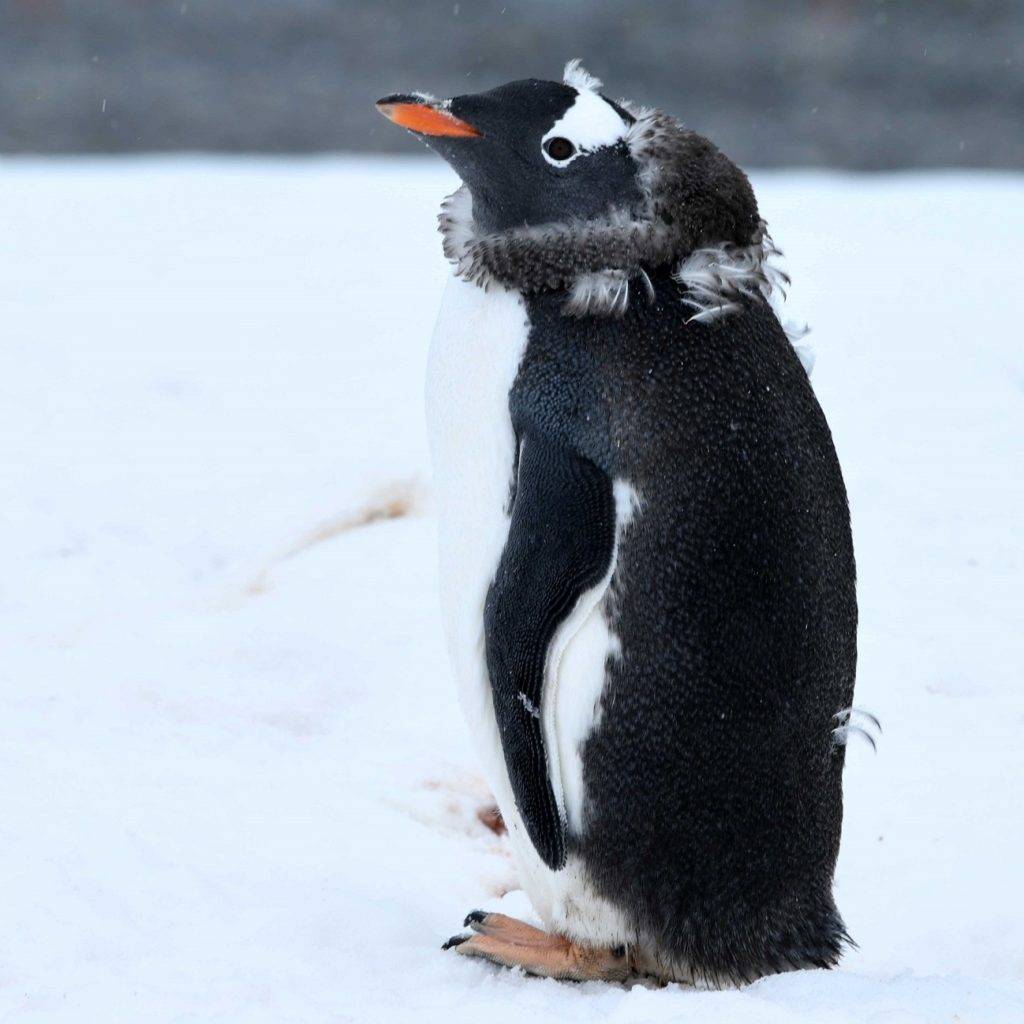
A molting penguin
Hard work on land
During out visit it was also time to see some big chicks, but we saw some smaller and much younger chicks too. Sad because they’ll probably not going to make it. Penguin created paths in the snow, called penguin highways, to make their way so efficient possible back into the sea to catch some food for their chicks. It was really funny seeing lots of penguins using the highway to get to the ocean. Sometimes they even used our “highway” (walking path) to get to the share as quickly as possible.
We also saw many Skua birds lurking around the colony for a chick to catch. Most of the times the colony protects themselves. Penguins look out for each other. If the parents are off fishing, other penguins look out for the chicks on a so do called kinder garden. But sometimes the Skua gets lucky. I saw two times on my trip that a Skua was eating a chick. Sad, but well that’s nature and they need to eat too.
On te picture you see a molting penguin, almost done. You can see some plumage around his neck. Soon he can enter the water again to go fishing.
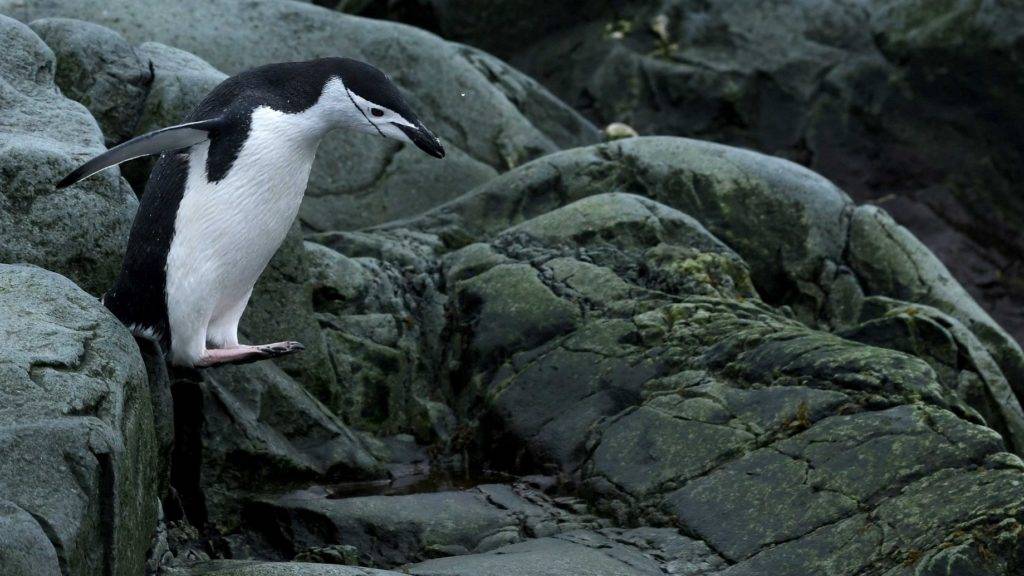
Chin strap penguin jumping
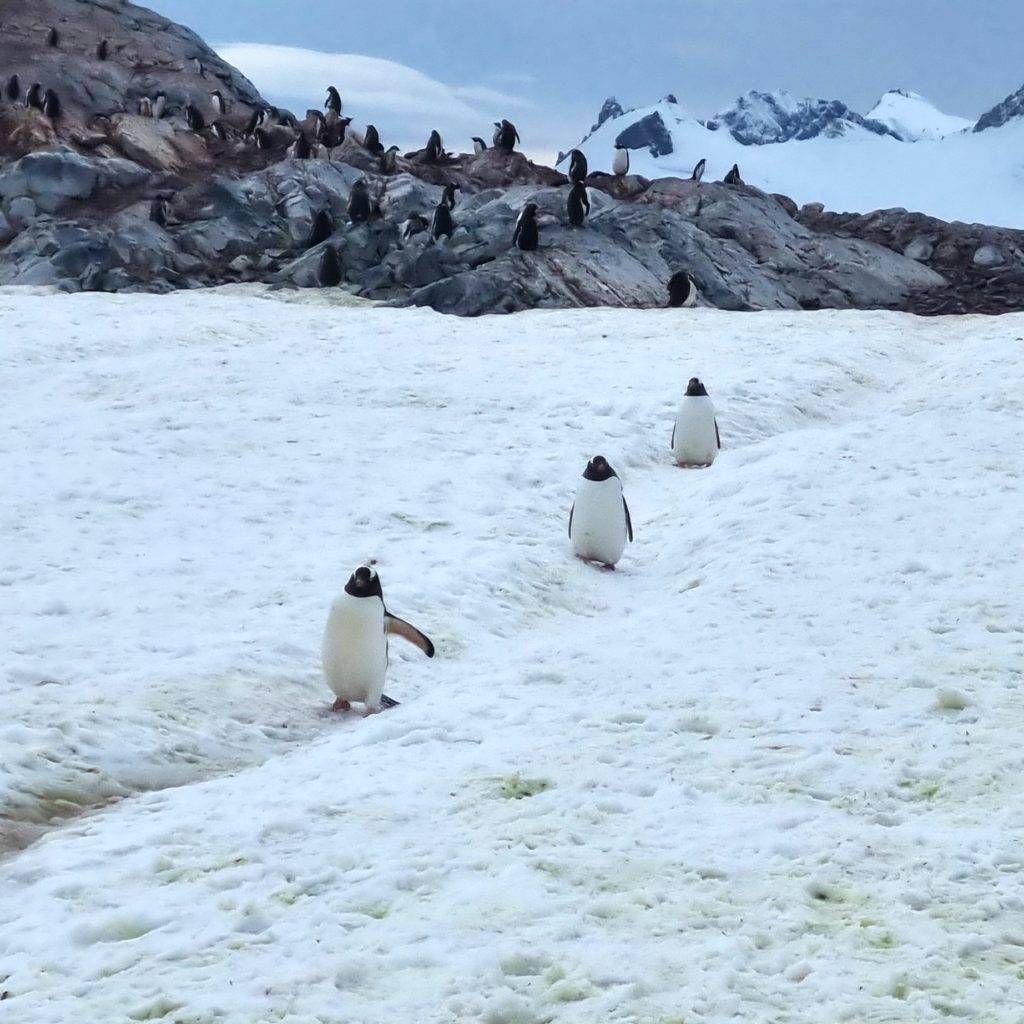
A penguin highway
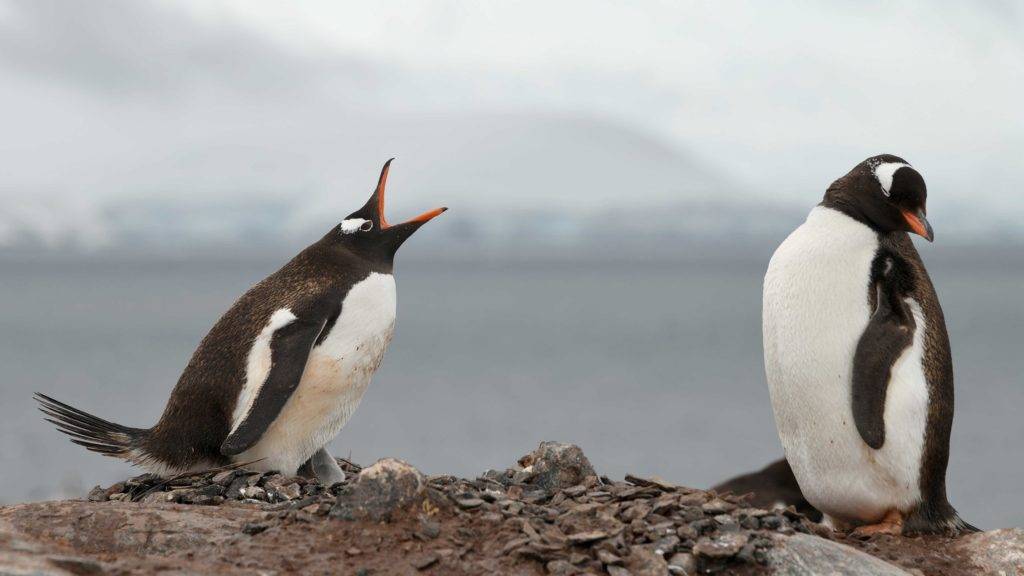
Get you’re shit elsewhere!
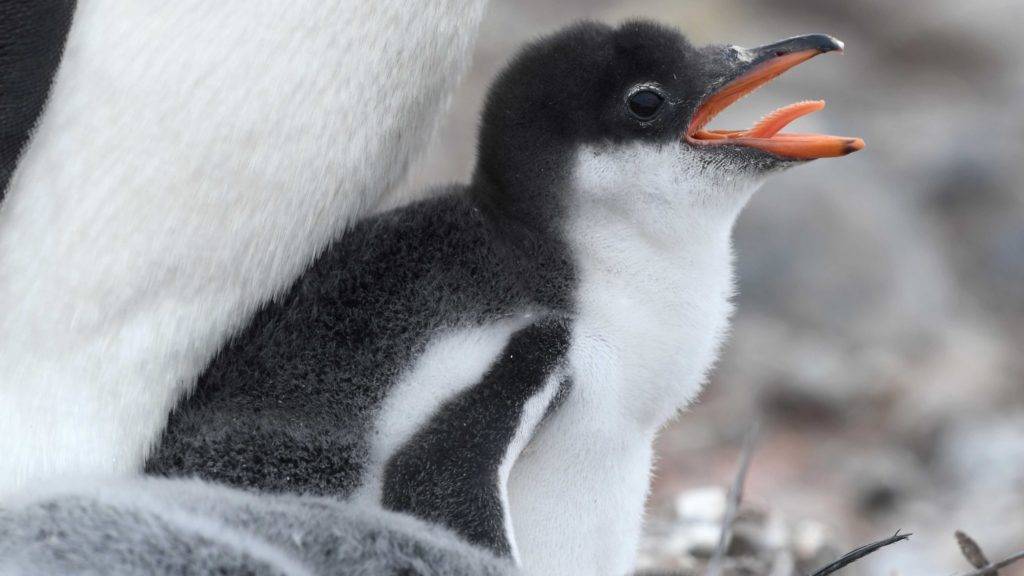
Cute baby penguin, check their tongue!
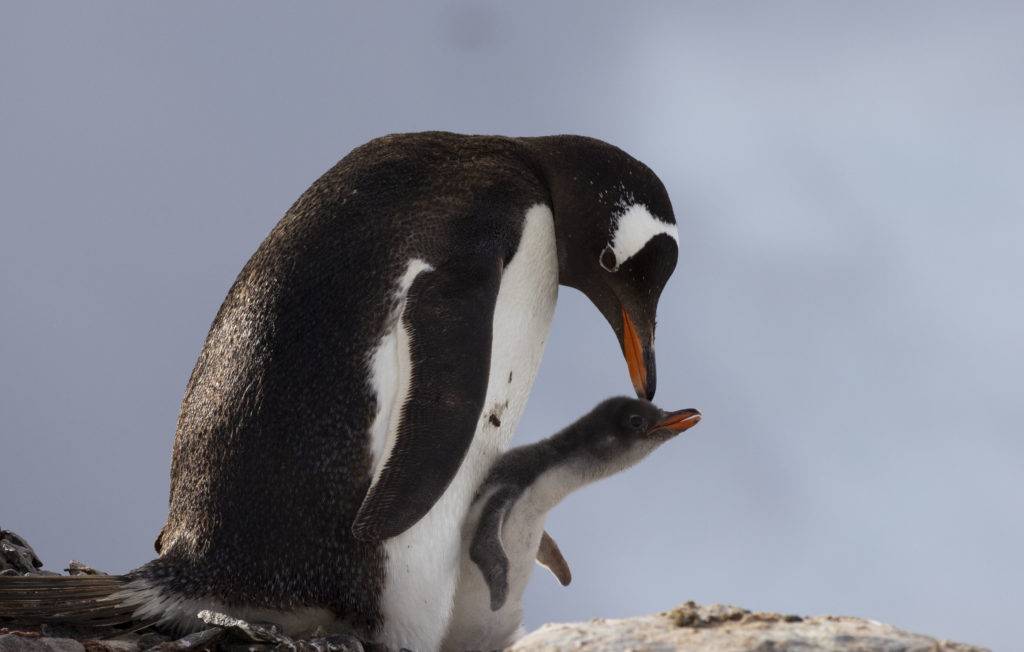
Close by mums side
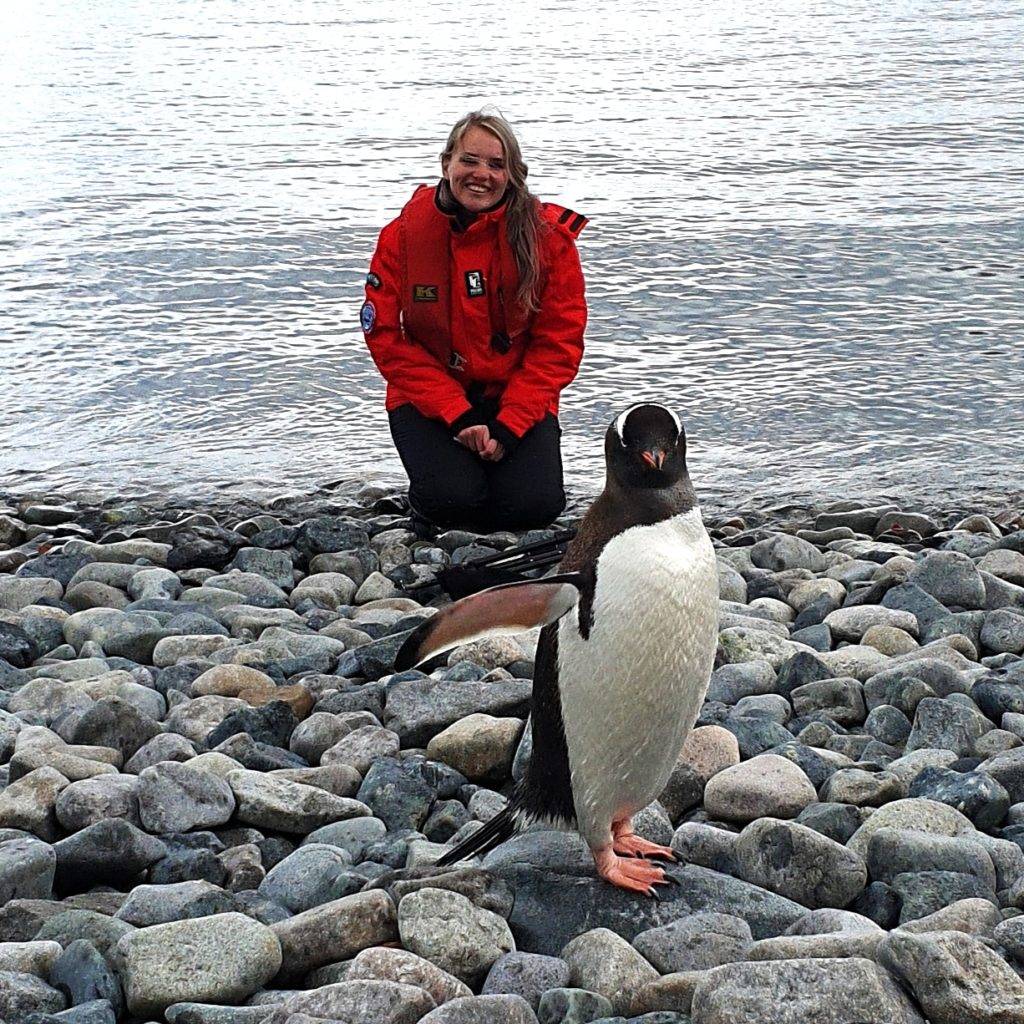
Penguin selfie
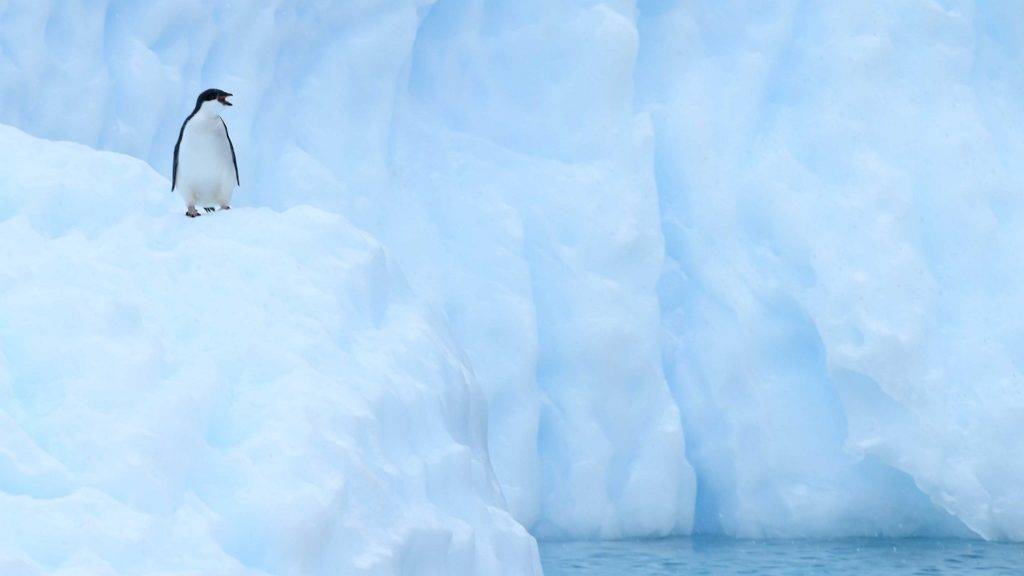
Cute Adelie penguin on top of an iceberg
This Post Has 2 Comments
Good day! I just wish to give you a huge thumbs up for your excellent information you have got here on this post. I am coming back to your blog for more soon. Good day! I just wish to give you a huge thumbs up for your excellent information you have got here on this post. I am coming back to your blog for more soon. נערות ליווי ברמלה
Hi! Thank you so much. I’m happy to hear that 🙂 If you want to stay updated and receive an email once a month you can sign up for my newsletter (see homepage)